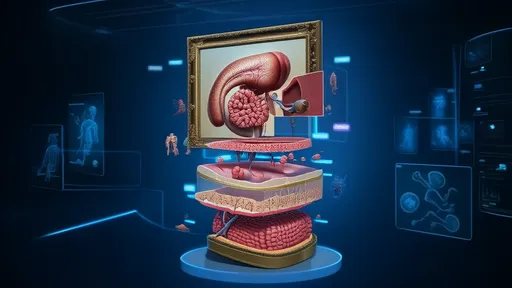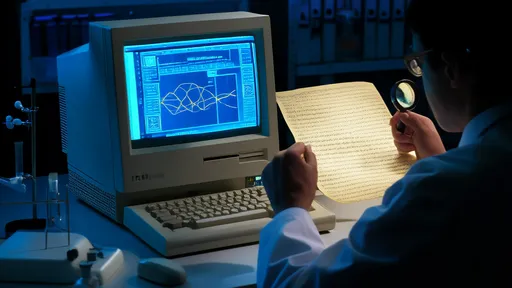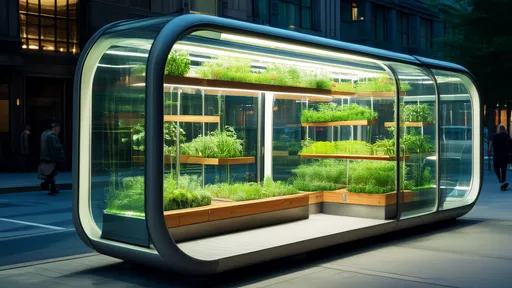In the heart of the urban jungle, where concrete often overshadows greenery, a revolutionary concept is taking root—literally. The Greenhouse Bus Stop: A Symbiotic Vegetable Garden in Waiting Spaces is transforming mundane transit hubs into vibrant ecosystems. This initiative not only redefines public infrastructure but also fosters community engagement, sustainability, and food security in unexpected places.
The idea is simple yet profound: integrate small-scale urban agriculture into bus shelters. These structures, typically overlooked as mere waypoints, are now becoming micro-farms where commuters can harvest fresh herbs or vegetables while waiting for their ride. The design incorporates vertical planters, hydroponic systems, and rainwater harvesting, turning passive spaces into productive ones. By doing so, it challenges the traditional notion of urban mobility infrastructure as purely functional and devoid of ecological or social value.
Why bus stops? The answer lies in their ubiquity and idle time. Bus shelters are scattered across cities, often underutilized beyond their primary purpose. By introducing greenery, these spaces become dual-purpose—serving transit needs while contributing to local food production. The concept also addresses the "waiting problem," where commuters experience boredom or frustration. Interacting with plants has been shown to reduce stress, making the wait feel shorter and more pleasant. It’s a win-win for mental well-being and urban biodiversity.
Beyond aesthetics, these greenhouse bus stops embody a deeper philosophy of symbiosis. They create a feedback loop between humans and nature: the plants purify the air and provide food, while commuters care for the garden through communal maintenance. Some setups even include composting bins for organic waste, closing the loop on urban resource cycles. This model has gained traction in cities like Rotterdam and Seoul, where pilot projects have reported reduced carbon footprints and increased community cohesion.
Critics argue that maintaining such installations could burden already strained municipal budgets. However, early adopters have found creative solutions. Partnerships with local schools or gardening clubs shift upkeep responsibilities to volunteers, while sponsorships from eco-conscious brands offset costs. In some cases, the produce is sold at nearby markets, generating revenue to sustain the project. The key lies in designing low-maintenance systems with drought-resistant plants and automated irrigation, ensuring longevity without excessive human intervention.
The social implications are equally compelling. These spaces become inadvertent classrooms, where children learn about agriculture amid asphalt and steel. Elderly residents, often isolated in cities, find purpose in tending to the gardens alongside younger commuters. The bus stop evolves from a transient space to a third place—a social hub rivaling cafes or parks. During heatwaves, the shade and evapotranspiration from plants naturally cool the surrounding area, demonstrating how small interventions can mitigate urban heat islands.
As climate change intensifies, reimagining infrastructure as adaptive and multi-functional becomes crucial. The greenhouse bus stop isn’t just about growing basil or tomatoes—it’s a prototype for resilient cities. When a typhoon damages traditional farms, these distributed micro-gardens can supplement food supplies. When air pollution peaks, their foliage acts as a biofilter. The project proves that sustainability needn’t exist in specialized zones but can permeate the very fabric of daily life.
Perhaps the most radical aspect is its democratization of agriculture. Not everyone can afford rooftop gardens or community plot memberships, but everyone waits for the bus. By bringing farming to the sidewalk, the initiative makes fresh produce accessible to apartment dwellers and low-income populations. Some installations even feature QR codes linking to recipes using the available herbs, bridging the gap between harvest and home cooking.
Of course, challenges remain. Vandalism, theft, or neglect can derail projects, requiring thoughtful placement and community buy-in. Not all climates suit year-round outdoor cultivation, necessitating adaptable designs. Yet, the successes thus far suggest that with clever engineering and grassroots participation, these hurdles are surmountable. The movement is spreading organically—pun intended—as citizens demand more from their public spaces than mere functionality.
In an era of climate anxiety, the greenhouse bus stop offers a tangible antidote: action at human scale. It demonstrates that environmental solutions needn’t be grandiose or technologically complex. Sometimes, change grows from something as humble as a rosemary bush by the 8:15 AM downtown express. As cities worldwide grapple with sustainability, this fusion of transit and agriculture might just be the seed from which greener urban futures blossom.

By /Jul 23, 2025

By /Jul 23, 2025

By /Jul 23, 2025

By /Jul 23, 2025

By /Jul 23, 2025

By /Jul 23, 2025

By /Jul 23, 2025

By /Jul 23, 2025

By /Jul 23, 2025

By /Jul 23, 2025

By /Jul 23, 2025

By /Jul 23, 2025

By /Jul 23, 2025

By /Jul 23, 2025

By /Jul 23, 2025

By /Jul 23, 2025

By /Jul 23, 2025

By /Jul 23, 2025